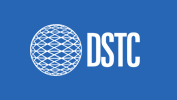|
1. IntelliConnect
Recent enquiries (9/11 Commission in USA, Bishart in UK, Flood
in Australia) have all identified poor information and intelligence
sharing between agencies as being the major cause of intelligence
failure, whether in national security or law enforcement. The
tensions between managing investigation and intelligence: tasking
versus analysis, facts versus uncertainty, make intelligence led
investigations a challenge, both for the defence and policing
agencies. Whilst the issues are as much to do with policy and
personality as with technology it is clear that strong technical
architectural principles are needed to underpin any trusted, sharing
mechanism. As a result the need for interoperability between the
different intelligence agencies is rapidly becoming critical.
However these different organizations need to control their own
information, but share in well-defined circumstances. This technology
application concept uses DSTC's Electronic Health Record System,
based on a publicly available standards and archetype-based Electronic
Health Record Architecture called openEHR to share sensitive intelligence
data using open standards.
2. Analysis of Competing Hypotheses using Subjective Logic
Intelligence analysis is a complicated task that requires a high
degree of analytical judgement under conditions of considerable
uncertainty. This judgement is used to fill in the gaps in knowledge
and is the analyst's principal means of managing uncertainty.
Much of intelligence analysis includes judging the relevance and
the value of evidence to determine the likelihood of competing
hypotheses. DSTC has developed a formal approach to the evaluation
of competing hypotheses and a set of accompanying technologies
based on Subjective Logic.
3. Mining with Mango - the seed, the pith and the shell
DSTC's Mango toolkit can be used in a number of knowledge management
and mining tasks, including text analysis of email collections
like that of failed U.S corporation Enron. Mango is a prototype
low-level software toolkit for creating and using semantic spaces
(a cognitively motivated and validated knowledge represention)
to mine and represent data for further analysis.
4. Evaluating & Developing Intelligence Sources through
Reputation Systems
Information used in Intelligence analysis varies in its reliability
and accuracy, at least due in part to the reliability of the sources
used to obtain it. Trust in the reliability and accuracy of the
evidence can be improved by collecting the same information from
a number of different independent sources. Reputation Systems
can show that source reliability can be captured and developed
and that the formal calculus offered by Subjective Logic can be
used to determine reliability and accuracy of information, based
on the source reliability and the information paths that are traversed.
5. AusPlans
Augmented Synchronised Planning Spaces (AUSPLANS) is a Defence
domain project coordinated by DSTC SA. The project focuses on
support for intense collaboration activities within Defence Command
and Control Environments through the rapid augmentation and enablement
of physical workspaces using emerging ubiquitous computing and
human interaction technologies.
6. Collaborative Real-time Annotation of High Quality
Images & Video
Annotations provide significant value-add to resources through
the attachment and sharing of community or group knowledge. DSTC's
Vannotea software enables distributed groups of users to collaboratively
view, discuss and annotate high quality video and images (2D/3D)
in real time, within a videoconferencing environment. Annotations
can be attached to regions of images, video segments, keyframes
or regions of keyframes and can be saved for later retrieval.
The system is of particular interest to the defence community
to enable the annotation of surveillance images and video.
7. Knowledge Mining over Distributed Multimedia Databases
DSTC's FUSION technology application combines workflows and web
services to systematically capture and process high quality data,
metadata and provenance. Ontologies and inferencing rules are
used to analyse, semantically label and correlate the range of
data and media types. Finally sophisticated 3D data exploration
and hypothesis testing interfaces enable the development and refinement
of predictive models and the generation of new experimental designs
through statistical analysis of existing data. These tools enable
controlled capture of observational data so that the maximum knowledge
can be mined and re-used.
8. The Grid: Blueprint for a New Computing Infrastructure
Grids couple geographically distributed resources such as high-performance
computers, workstations, clusters of computers, data repositories
and scientific instruments. They have begun to provide the infrastructure
to support global collaboration in ways that were not previously
possible by facilitating the construction of virtual organizations.
DSTC's technology applications - Nimrod and GriddLeS - demonstrate
how such tools are being used for running distributed atmospheric
science codes over high-bandwidth networks such as the GrangeNet
backbone. DSTC is considering potential applications in the area
of security and defence.
|



